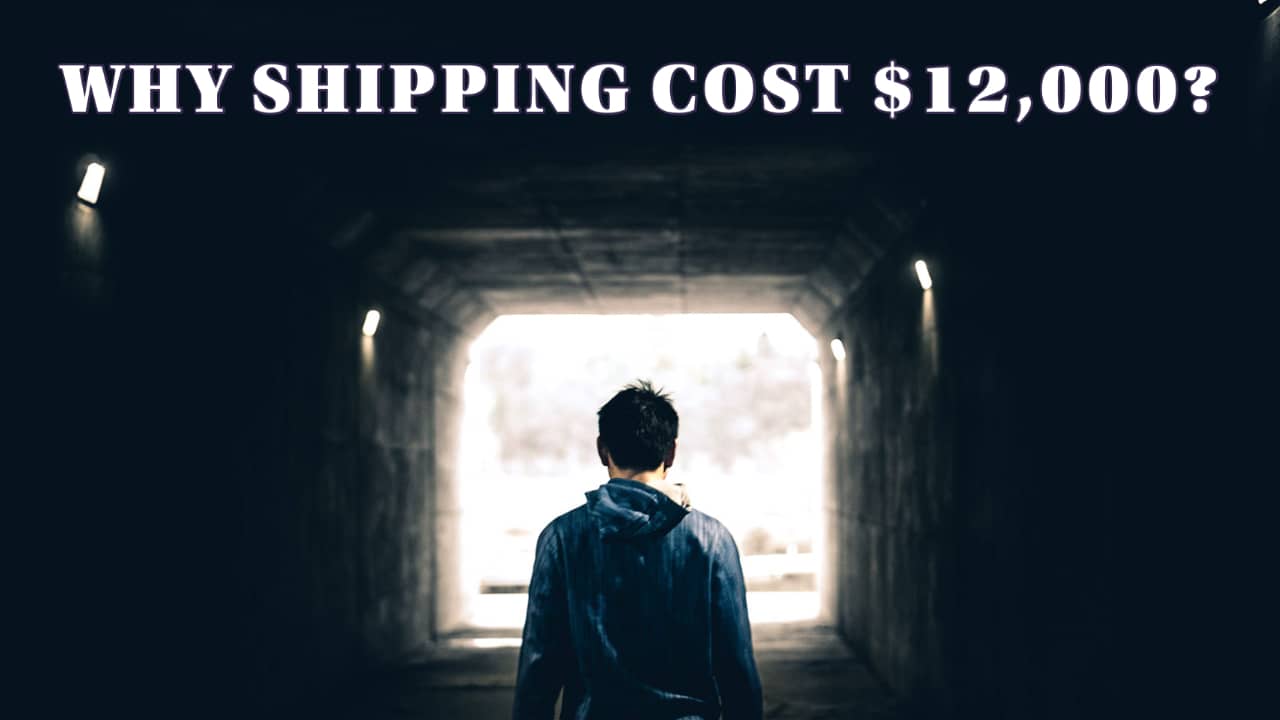
Light at the End of the Tunnel for Supply Chain Chaos
4-minute read (5-minute listen)
In an interview, Heather du Plessis-Allan talks to Sam Dickie from Fisher Funds about why the global shipping crisis might be wrapping up.
Full Audio Interview (transcription below):
Heather: Is there anything that isn’t stuck on a ship at the moment? Toys, building products, bikes, the chances are you’re having trouble sourcing them. But there might be some light at the end of the tunnel, according to Sam Dickie from Fisher Funds, who’s with us now.
Hey, Sam. What makes you think we’re at the end of it nearly?
Sam: We all know about the supply chain pressures. Eighteen months ago, it cost $1,500 bucks to ship a container from Shanghai to LA. A month ago, that cost more than $12,000, so an eightfold increase.
We’ve heard a lot about inflation and the sharply increased costs of moving goods around, which was one of the original drivers of uptake in inflation if you remember way back to the start of this year.
So why did this happen? For example, if you think about the logistics of moving a bike from Western China to Salt Lake City in the US, there are around 11 potential choke points in that logistics chain, and almost all of them have been impacted.
So everything from China port struggling to load the bike, worker shortages due to COVID, not enough containers to put the bike in, and those containers being in the wrong place. Also, there weren’t enough truck drivers in the US to transport the bike to Salt Lake City.
Finally, bikes that normally took weeks to ship are taking months, so the distributor orders three times as many bikes as normal. It’s actually got a name now. The globe used to run on a “just in time” inventory system. Now it seems to be running on a “just in case” inventory system.
To top all that off, there was a surging demand as we came out of lockdowns. We really had the perfect storm. But the funny thing about perfect storms is they usually don’t take that much to unwind.
So to answer your question, what’s changing and what are the early signs that it may be starting to ease? There are lots of things going on, but we just focus on three things.
Firstly, measure the port congestion. Whether it be congestion on the cranes or congestion with ships in the harbour, particularly in Asia, it has improved by 30% recently, and we are now around long term averages.
So that means second, that freight rates are starting to fall so that the cost to ship that same 40-foot container from Shanghai to LA is 20% less than a month ago.
And the final point is around the inventory and amount of goods on hand. The early signs are that the available inventory of manufactured goods globally is starting to spike. So if you look at Korea’s and Taiwan’s manufactured goods inventories, I use those countries as they are very big exporters of the basic global products, like semiconductors, cars and chemicals. Their inventory levels are now up 20 to 30% from lows and are around long term averages.
So it feels like it’s starting to ease a bit.
Heather: Right, so the president of NZ Freight Forwarders Federation, Chris Edwards, reckons we’ve still got another couple of years, though, before it fully resolves itself. Would you say that’s about right?
Sam: I don’t know how long it’s going to take. When we’re faced with this huge wave of freight coming across docks and warehouses, it feels like it’s going to last forever. What I can tell you is that it’s easing pretty sharply. When you hear that 11 links in that logistics chain have been congested, and all of them have started to unwind, that means goods can start flowing pretty freely.
From an investor’s point of view, these supply chains snarl-ups were one of the early drivers of the inflationary pressures. So when this eases, this could bring some relief from inflation and possibly some relief from interest rate rises globally.
Heather: We sit at the end of the world, right? So if it starts to free up everywhere, we’re still going to have to wait for a while longer, aren’t we?
Sam: Probably, yes. But it doesn’t take much for these things to free up. It was only three months ago that Asian port congestion was at all-time highs, 100-year highs, and that’s already improved to long term averages. So it doesn’t take long.
But there is a word of caution here. The globe is probably getting pretty close to having ordered too much stuff just in case. If we do see this unwind, it could slow economic growth. If you think about that Western China bike manufacturer, who had surging demand from orders of three bikes rather than one, suddenly will have no orders.
Heather: That’s a fair point. If there’s an oversupply and overstocking, that might also mean some deals later on for all of us. Thank you so much. Great to chat with you.
Source: Newstalk ZB. This interview was edited for clarity.
P.S. Easy Freight Ltd helps New Zealand importers & exporters to save money on international freight and reduce mistakes by guiding how to comply with Customs and biosecurity rules.
➔ Contact us now to learn how we can assist you.
